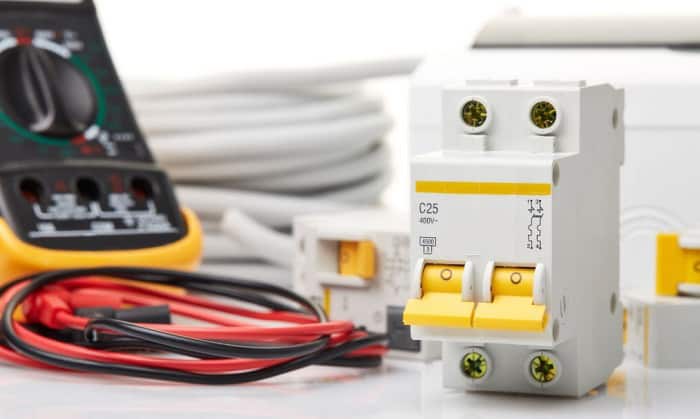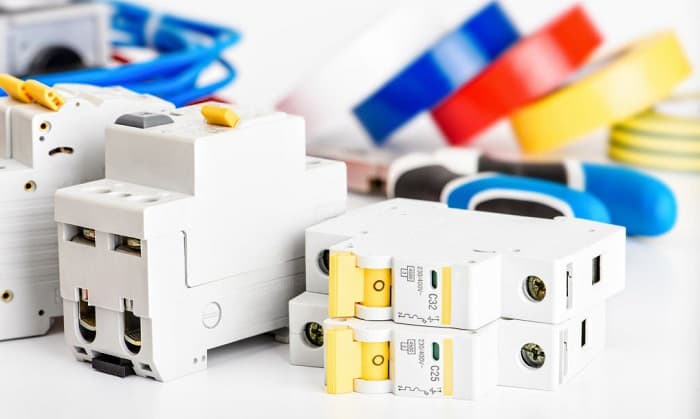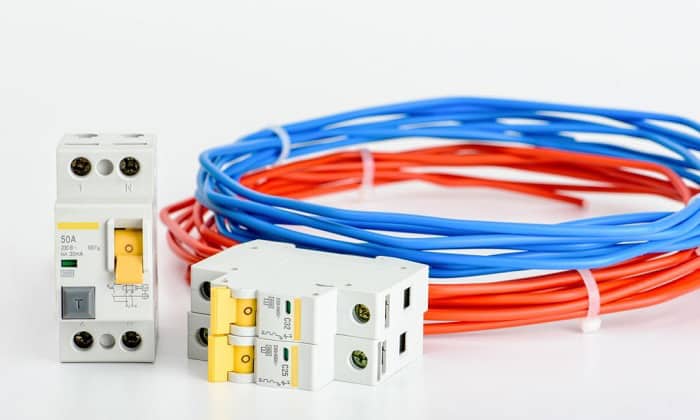You’re about to replace a circuit breaker in the panel. But you want to know the difference between a GFCI breaker vs regular breaker to avoid ruining the flow of electricity.
Put simply, a GFCI breaker is typically ideal for preventing ground faults near wet areas, such as bathrooms and swimming pools. But a regular breaker may not have this ability, making it preferable for use indoors and away from wet locations.
Continue reading to learn more about the similarities and differences between GFCI and regular circuit breakers.
Table of Contents
What’s the Difference Between a GFCI Breaker and a Regular Breaker?
A GFCI circuit breaker also called a Ground Fault Circuit Interrupter breaker, is a unit that protects connected appliances and other electronics against ground faults and leakage currents near fairly wet locations.
Also, a GFCI breaker is often an outlet circuit breaker. That means that you install it in a receptacle that can cater to that breaker’s unique appearance. Alternatively, GFCI breakers can also be set up in electrical panels.
On the other hand, a regular breaker generally protects against overloads and short circuits. It is available in two types: single-pole and double-pole.
How Can You Tell If Your Breaker Is GFCI?
Aside from understanding what a GFCI breaker, particularly its function is, you’ll know what a GFCI breaker look like by looking at its shell.
A GFCI breaker (in outlet form) typically has a reset and test button on its face. If you don’t know if your breaker has a reset and test button, you can also look for a red (sometimes white) switch on its outer shell.
On the other hand, a GFCI breaker that’s installed in the electrical panel will have a “push here to test” button.
Can You Use a GFCI Breaker as a Regular Breaker?
No, because a house GFCI breaker and a regular breaker have different functions. If your regular breaker is old and needs a replacement, it’s best just to buy a new identical device (provided the amperage and the brand were picked correctly).
Frequently Asked Questions
1. Do I Need A GFCI Outlet If I Have A GFCI Breaker?
It’s not a requirement to install a GFCI outlet in addition to a GFCI breaker. In particular, it’s not ideal to use a GFCI breaker and outlet for the same connection as both units may not work as intended. Moreover, the former may be a bad choice for old connections with multiple wires.
2. How Long Is A GFCI Breaker Good For?
The typical GFCI circuit breaker should last approximately 15 to 40 years. However, this type of breaker may have a shorter lifespan than usual if exposed to certain adverse events.
If you think that a GFCI breaker is not supplying connected electronics with sufficient power (or none at all), you can check it by attaching probes from a multimeter to it.
If the multimeter doesn’t register an electrical output, it might be time to replace that faulty circuit breaker with a new model.
Conclusion
By now, you should have a good idea of the distinctions between a GFCI breaker vs regular breaker.
Remember, a GFCI circuit breaker is generally a better electronics protector for places near water. You can install a regular breaker for other areas, as long as they’re not near wet locations.
Moreover, you need to consult a professional electrician or your electrical circuit diagram to know if your panel needs either of these device types.

I am Andrew Wright. With 8 years of experience designing, installing, and maintaining electrical power systems. I love my job, and I have always wanted to offer others the necessary help so they can take care of their houses.



